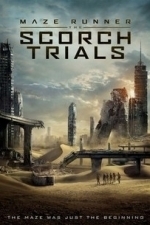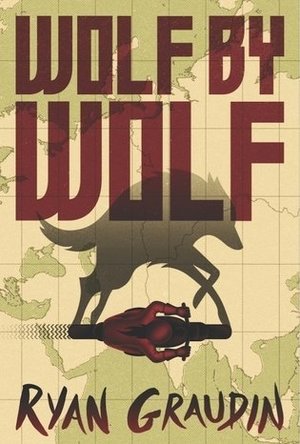Search
Search results
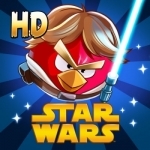
Angry Birds Star Wars HD
Games
App
JOIN THE ANGRY BIRDS IN THEIR BIGGEST ADVENTURE YET! A long time ago in a galaxy far, far away... a...
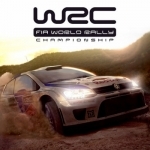
WRC The Official Game
Games
App
*****THE RALLY SIMULATION***** WRC The Official Game, the standard for off-road racing games, is...
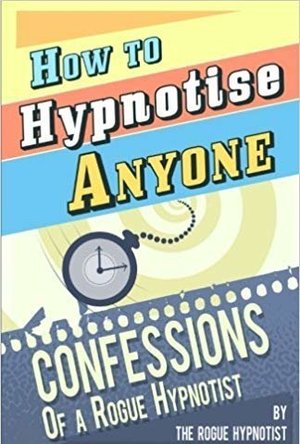
How to Hypnotise Anyone - Confessions of a Rogue Hypnotist
Book
The number 1 Amazon kindle bestseller on hypnosis is now available in paperback! Finally the hidden...
postapocalypticplayground (27 KP) rated The Last Namsara in Books
Jan 9, 2018
Where the Namsara brings life the Iskari brings death. Asha is the Iskari, death bringer and dragon hunter. Cursed with a lifetime of knowing it was her fault that dragons had come to ransack her town when she was a child, she is feared and reviled. It was her mother telling her the Old Stories of dragons that brought them, a balm to her nightmares with horrendous consequences. Asha has dedicated her young life to slaying the dragons, although now with them dwindling in numbers she must take drastic action to ensure a successful hunt. Asha must tell the outlawed Old Stories again.
The last Namsara is very much a book of revelations for Asha. The dragon attack when she was a child left her without a mother and also horrible scarred from the burns she suffered. Having to not only live with the fact that she is hated she also has to deal with the stares associated with her disfigurement, the armour she wears is both necessary for her hunt and for her emotional wellbeing. When her secret is out following an accident during a hunt, she is tended to by Torwin, her betrothed’s slave, who seemingly is willing to keep her secret, but at what cost to both of them?
Through a series of cruel acts she finds herself visited by the first Namsara who starts her on a path that will not only unravel the truth about what happened the day of the dragon attack, but also a much deeper and long running deception. Asha must therefore right the wrongs.
I very much liked Asha as a character, I found that she was written with both strength and vulnerability, she has always been the Iskari and that has given her an opportunity to hide behind a persona. She is however still a teenager and she has the same hopes and fears as everyone, but her hardened act is thankfully easy to scratch beyond the surface of. The book was an easy flowing read and I particularly liked how the Old Stories were interwoven into the pages, completing parts of the story and acting almost like a running prologue. It was a great way of explaining a complicated back story without being an info dump on the reader. I also found that there was a great deal of realism about the aftermaths of events, the fact that laws can’t be changed to suit the sovereign and that one persons change for the better will always be anothers change for the worse. It didn’t shy away from the ugly side of things and that always gets good marks from me.
That being said, I found the Last Namsara lacked a certain spark. I enjoyed reading it very much don’t get me wrong, but it didn’t have my pulse racing and I found it easy to put down of an evening. I would still recommend this to anyone who is a fan of dragons and kick ass female protagonists as it really does have a lot to like.
The last Namsara is very much a book of revelations for Asha. The dragon attack when she was a child left her without a mother and also horrible scarred from the burns she suffered. Having to not only live with the fact that she is hated she also has to deal with the stares associated with her disfigurement, the armour she wears is both necessary for her hunt and for her emotional wellbeing. When her secret is out following an accident during a hunt, she is tended to by Torwin, her betrothed’s slave, who seemingly is willing to keep her secret, but at what cost to both of them?
Through a series of cruel acts she finds herself visited by the first Namsara who starts her on a path that will not only unravel the truth about what happened the day of the dragon attack, but also a much deeper and long running deception. Asha must therefore right the wrongs.
I very much liked Asha as a character, I found that she was written with both strength and vulnerability, she has always been the Iskari and that has given her an opportunity to hide behind a persona. She is however still a teenager and she has the same hopes and fears as everyone, but her hardened act is thankfully easy to scratch beyond the surface of. The book was an easy flowing read and I particularly liked how the Old Stories were interwoven into the pages, completing parts of the story and acting almost like a running prologue. It was a great way of explaining a complicated back story without being an info dump on the reader. I also found that there was a great deal of realism about the aftermaths of events, the fact that laws can’t be changed to suit the sovereign and that one persons change for the better will always be anothers change for the worse. It didn’t shy away from the ugly side of things and that always gets good marks from me.
That being said, I found the Last Namsara lacked a certain spark. I enjoyed reading it very much don’t get me wrong, but it didn’t have my pulse racing and I found it easy to put down of an evening. I would still recommend this to anyone who is a fan of dragons and kick ass female protagonists as it really does have a lot to like.
Haley Mathiot (9 KP) rated Lockdown (Escape from Furnace, #1) in Books
Apr 27, 2018
<b> My summary: </b> Alex was like any other boy. Go to school, hang out with his group, and control the monkey bars. But when he started stealing, his life changed for the worse. Out of nowhere, his best friend is murdered, and he is framed for it. he is sent to the child prison: a Hell hole. Worse than Hell. Furnace. When he’s there, he is disgusted with the way people live. Kids do hard labor like chipping rock. Gangs kill kids. and he isn’t the only innocent person who was framed. But there’s no hope of escape. Nobody can escape furnace. Or at least, that’s what they all say. <i> But that’s only because nobody ever has… </i>
<b> What I felt: </b> Personally, the first time I looked at the cover, I found it just a little disturbing. I thought “eh, I doubt very seriously I’ll like that book. But hey—they want to send me a free book? I’ll take a free book.” So no, I didn’t really like the cover. They could have done much better, either artistically or graphically or even with the colors. But that’s just me as an artist and a girl :D so I did judge it. boy was that a mistake.
The first sentence of this book seemed to grab me by the neck: “If I stopped running, I was dead.” From there, the entire book held me and wouldn’t let me go, from that first sentence to the very end. In fact, it held me after the end, too. I distinctly remember my blood racing, heart beating, sweating, adrenalin searing through my veins while I read this book! It was breathtaking and riveting to the last word. And even after the last word. I sat there, staring at the blank page, gasping and panting like a dog from lack of oxygen from reading a book. (that doesn’t happen very often, people.)
<b> Characters: </b> The characters in this book were very relatable. They weren’t super people, they were real. They handled the horrific experiences of Furnace the same way I would have—screaming in their sleep, crying, throwing up from the horrors.
<b> Writing: </b> the writing was very good—not one of those books where the author just says what he wants to say. Alexander Gordon Smith followed my creative writing teachers’ first rule: Show, don’t tell. It was an amazing thing to read, the language was very full in vocabulary, and it had good prose. There wasn’t any really bad foul language either, like some of the other teen books I’ve been reading lately.
Recommendation: this book is a thriller, not a horror book, even though it’s mildly graphic (mildly. Not really that bad. Descriptive enough to be kinda gross at times… but hey, it could be just because I’m a girl.). It’s not the most horrific book I’ve ever read, but it’s certainly not for an eight-year-old. Personally I’d recommend it for anyone fourteen and up (but that’s just me).
Here is a link for a giveaway for this book! http://haleymathiot.blogspot.com/2009/09/win-lockdown.html
<b> What I felt: </b> Personally, the first time I looked at the cover, I found it just a little disturbing. I thought “eh, I doubt very seriously I’ll like that book. But hey—they want to send me a free book? I’ll take a free book.” So no, I didn’t really like the cover. They could have done much better, either artistically or graphically or even with the colors. But that’s just me as an artist and a girl :D so I did judge it. boy was that a mistake.
The first sentence of this book seemed to grab me by the neck: “If I stopped running, I was dead.” From there, the entire book held me and wouldn’t let me go, from that first sentence to the very end. In fact, it held me after the end, too. I distinctly remember my blood racing, heart beating, sweating, adrenalin searing through my veins while I read this book! It was breathtaking and riveting to the last word. And even after the last word. I sat there, staring at the blank page, gasping and panting like a dog from lack of oxygen from reading a book. (that doesn’t happen very often, people.)
<b> Characters: </b> The characters in this book were very relatable. They weren’t super people, they were real. They handled the horrific experiences of Furnace the same way I would have—screaming in their sleep, crying, throwing up from the horrors.
<b> Writing: </b> the writing was very good—not one of those books where the author just says what he wants to say. Alexander Gordon Smith followed my creative writing teachers’ first rule: Show, don’t tell. It was an amazing thing to read, the language was very full in vocabulary, and it had good prose. There wasn’t any really bad foul language either, like some of the other teen books I’ve been reading lately.
Recommendation: this book is a thriller, not a horror book, even though it’s mildly graphic (mildly. Not really that bad. Descriptive enough to be kinda gross at times… but hey, it could be just because I’m a girl.). It’s not the most horrific book I’ve ever read, but it’s certainly not for an eight-year-old. Personally I’d recommend it for anyone fourteen and up (but that’s just me).
Here is a link for a giveaway for this book! http://haleymathiot.blogspot.com/2009/09/win-lockdown.html
Movie Metropolis (309 KP) rated Maze Runner: The Scorch Trials (2015) in Movies
Jun 10, 2019
A Vast Improvement
The Young Adult genre has, for the last few years, been dominated by Jennifer Lawrence and her imposing Katniss Everdeen, and as fans prepare for the conclusion of Mockingjay in November, they can whet their appetites for the conclusion of another YA trilogy.
The Maze Runner was a decent, albeit muddled attempt at getting the coveted young adult audience interested in another series and its sequel, The Scorch Trials promises more of the mind-blowing storytelling of its predecessor, but is it a success?
The plot of Scorch Trials takes place immediately after the events of the previous instalment as a group of teenagers battle against the sinister W.C.K.D, an organisation intent on finding a cure for a virus that has ravished Earth.
Amongst them is leader Thomas (Teen Wolf’s Dylan O’Brien), the Katniss Everdeen of this particular series, Theresa (Skins’ Kaya Scodelario) and Newt (Love Actually’s Thomas Brodie-Sangster). There are numerous other characters in the group but they aren’t fleshed out enough to make an impact on screen.
Unfortunately, character development is a serious problem throughout, with only a handful of the large cast having enough of a backstory to make the memorable. O’Brien is particularly likeable as the confused Thomas and his more reserved persona is a pleasant change to the majority of lead characters in the genre.
Of the adult cast, Aidan Gillen does a sterling effort as the mysterious Janson and Giancarlo Esposito is perhaps the best character in the entire film with his portrayal of Jorge – a bargain hunter and ally of the group.
A much larger budget has done wonders for the series’ set-pieces. This is a particularly striking movie with numerous heart-racing action sequences filmed with a mixture of stunning CGI and breath-taking practical effects, a desert thunderstorm is beautifully filmed and a particular highlight.
The desolate landscapes and ruined cities give the film more than a whiff of Mad Max and I Am Legend with the latter being very similar.
These pulse-raising scenes do not do Scorch Trials’ dialogue any good however. The characters don’t get much to say apart from “Run” and “Look out” and the series lacks the powerful communication that The Hunger Games has become known for.
Nevertheless, those coming to the series without reading the books will find much to enjoy here as the plot is impossible to guess – there’s simply no way of knowing what is going to happen from one moment to the next.
It’s worth noting that this is a very dark film with a tone unlike anything else seen in the genre. The 12A certification given to it seems a little too lenient and in parts The Scorch Trials is deeply unnerving.
Maze Runner: The Scorch Trials is, on the whole, a fantastically enjoyable romp in spite of its excessive length and flat characters. It’s not quite up to the standards of The Hunger Games series but surpasses its Divergent franchise counterparts by some margin and is well worth a trip to the cinema.
https://moviemetropolis.net/2015/09/13/a-vast-improvement-maze-runner-the-scorch-trials-review/
The Maze Runner was a decent, albeit muddled attempt at getting the coveted young adult audience interested in another series and its sequel, The Scorch Trials promises more of the mind-blowing storytelling of its predecessor, but is it a success?
The plot of Scorch Trials takes place immediately after the events of the previous instalment as a group of teenagers battle against the sinister W.C.K.D, an organisation intent on finding a cure for a virus that has ravished Earth.
Amongst them is leader Thomas (Teen Wolf’s Dylan O’Brien), the Katniss Everdeen of this particular series, Theresa (Skins’ Kaya Scodelario) and Newt (Love Actually’s Thomas Brodie-Sangster). There are numerous other characters in the group but they aren’t fleshed out enough to make an impact on screen.
Unfortunately, character development is a serious problem throughout, with only a handful of the large cast having enough of a backstory to make the memorable. O’Brien is particularly likeable as the confused Thomas and his more reserved persona is a pleasant change to the majority of lead characters in the genre.
Of the adult cast, Aidan Gillen does a sterling effort as the mysterious Janson and Giancarlo Esposito is perhaps the best character in the entire film with his portrayal of Jorge – a bargain hunter and ally of the group.
A much larger budget has done wonders for the series’ set-pieces. This is a particularly striking movie with numerous heart-racing action sequences filmed with a mixture of stunning CGI and breath-taking practical effects, a desert thunderstorm is beautifully filmed and a particular highlight.
The desolate landscapes and ruined cities give the film more than a whiff of Mad Max and I Am Legend with the latter being very similar.
These pulse-raising scenes do not do Scorch Trials’ dialogue any good however. The characters don’t get much to say apart from “Run” and “Look out” and the series lacks the powerful communication that The Hunger Games has become known for.
Nevertheless, those coming to the series without reading the books will find much to enjoy here as the plot is impossible to guess – there’s simply no way of knowing what is going to happen from one moment to the next.
It’s worth noting that this is a very dark film with a tone unlike anything else seen in the genre. The 12A certification given to it seems a little too lenient and in parts The Scorch Trials is deeply unnerving.
Maze Runner: The Scorch Trials is, on the whole, a fantastically enjoyable romp in spite of its excessive length and flat characters. It’s not quite up to the standards of The Hunger Games series but surpasses its Divergent franchise counterparts by some margin and is well worth a trip to the cinema.
https://moviemetropolis.net/2015/09/13/a-vast-improvement-maze-runner-the-scorch-trials-review/
Kristy H (1252 KP) rated The Twilight Wife in Books
Feb 13, 2018
Kyra Winthrop and her husband, Jacob, are headed to live on a remote island (in the house where Jacob grew up) to get away from it all. Kyra recently suffered a head injury in a diving accident; she hit her head on a rock and while Jacob saved her, she cannot remember the past four years of her life and is having trouble with her current ability to retain things. Kyra and Jacob hope time away, in a quiet place, will let Kyra--and her memory--heal. But once on the island, Kyra begins to remember more and more. About the accident and about her past. She has no one to rely on but Jacob, who tells her much of what she remembers are only dreams. But Kyra is convinced it's more. And what about the shadowy third figure she continually recalls from their diving accident? Kyra isn't sure who to trust, even herself, as she tries to unfold her past and recall not only her accident, but who she has been for the past four years.
This was a fascinating book that really took the premise of the "unreliable" narrator to a whole new level. What I enjoyed the most is that we learned the bits and pieces about Kyra's life, and who she was, just as she did. This made the novel very suspenseful and helped make up for any points where it seemed a little unbelievable (e.g., only forgetting exactly these 4 crucial years, no Internet on the island except at their home, etc.), or where the story felt a bit flat. Kyra is our main character, and she's interesting and complicated, with her memory loss and unknown past. She's truly trying to find out who she is. The others in the novel, mainly Jacob and a few island residents, aren't exactly characters you form an attachment to. Still, I found the book captivating and basically read the second half in one sitting: it's a very fast read, and you become easily drawn into Kyra's world.
I found the ending to be a little easy and pat, but I still enjoyed watching all the pieces come together (even if I'd guessed some of them already). The novel really truly does a masterful job at creating intrigue into Kyra's past and the various parts of her life, and how she has arrived on this remote island with Jacob (don't want to give anything away). It's a little eerie, a little creepy, and a little haunting. It was sort of a fun version of a Lifetime movie--one that had me hooked and enjoying the plot, versus rolling my eyes and changing the channel--and because I so enjoyed seeing everything come together and racing through the end of the book, it pushed my rating up to 4 stars. If you're looking for a quick suspense read, it's definitely worth picking this one up.
I received a copy of this novel from the publisher and Edelweiss (thank you!); it is available everywhere as of 12/27/2016.
This was a fascinating book that really took the premise of the "unreliable" narrator to a whole new level. What I enjoyed the most is that we learned the bits and pieces about Kyra's life, and who she was, just as she did. This made the novel very suspenseful and helped make up for any points where it seemed a little unbelievable (e.g., only forgetting exactly these 4 crucial years, no Internet on the island except at their home, etc.), or where the story felt a bit flat. Kyra is our main character, and she's interesting and complicated, with her memory loss and unknown past. She's truly trying to find out who she is. The others in the novel, mainly Jacob and a few island residents, aren't exactly characters you form an attachment to. Still, I found the book captivating and basically read the second half in one sitting: it's a very fast read, and you become easily drawn into Kyra's world.
I found the ending to be a little easy and pat, but I still enjoyed watching all the pieces come together (even if I'd guessed some of them already). The novel really truly does a masterful job at creating intrigue into Kyra's past and the various parts of her life, and how she has arrived on this remote island with Jacob (don't want to give anything away). It's a little eerie, a little creepy, and a little haunting. It was sort of a fun version of a Lifetime movie--one that had me hooked and enjoying the plot, versus rolling my eyes and changing the channel--and because I so enjoyed seeing everything come together and racing through the end of the book, it pushed my rating up to 4 stars. If you're looking for a quick suspense read, it's definitely worth picking this one up.
I received a copy of this novel from the publisher and Edelweiss (thank you!); it is available everywhere as of 12/27/2016.
Kristy H (1252 KP) rated Girls' Weekend in Books
Feb 13, 2018
Charlotte, Dani, and Meg have been friends for ages-- bonding over motherhood and the issues that accompany it. However, each woman has their own problems and are reluctant to bring them up with their friends. Charlotte, a busy and successful interior designer, has a dentist husband and a loving son, but she feels like her husband, Brett, doesn't even see her anymore. Dani's life appears great -- a caring husband and two kids, but she can't quite shake the empty feelings she has. And Meg is still reeling from losing her young son two years ago; her grief remains, but everyone around her seems to have moved on. When the three women get a chance to go away for a girls' weekend, they jump at the chance, even if involves a little rearranging of schedules. But once there, they make a fateful decision: they aren't coming back home.
When reading it, the premise seems a little farfetched, but the characters in this novel immediately seem very real and the book gives a lot of little details about motherhood that lend it realism (for instance, humming annoying intro music to a children's show at inappropriate times). Each woman is different, but you can relate to a piece of each of them. I found myself liking parts of each and being frustrated with other parts - just like your actual friends.
It's probably true that parts of the book are stereotypical toward men (and fathers) -- painting them as bumbling and clueless toward their wives and children, but sadly, there is some realism to it, too. Plus, as the storyline progresses, you fixate less on this fact and realize there's more to this story than black and white. Honestly, it speaks universally to many women, especially mothers: those seeking answers in life, those feeling guilty for not being happy when life seems perfect on paper, those wondering when life simply became a series of errands. I felt like Achterberg did an excellent job of dealing with and capturing some of the quintessential problems facing the modern mom.
The book is painful to read at times, but only because it's so well-written. Your heart breaks for Meg and all she has been through. The book lags a little in the middle, but really, the women do too, as they try to figure out exactly what they should do. It is fascinating because they are doing what you can't quite imagine pulling off. My mind was racing as I read: I mean, who would really watch your kids for that long? What spouse would be OK with this? Who could leave their kids for that long? And yet, you sort of dream for the time away, envy the women as you read the novel. It's easy to empathize with them, even as you may question some of their motives.
Overall, the book was easy to read and Charlotte, Meg, and Dani were interesting and relatable characters. The book made me think (and highlight many passages). It's a fun read, but also goes deeper, too. Really enjoyed it.
I received an ARC of this book from Netgalley (thank you!); it is available everywhere on 5/3.
When reading it, the premise seems a little farfetched, but the characters in this novel immediately seem very real and the book gives a lot of little details about motherhood that lend it realism (for instance, humming annoying intro music to a children's show at inappropriate times). Each woman is different, but you can relate to a piece of each of them. I found myself liking parts of each and being frustrated with other parts - just like your actual friends.
It's probably true that parts of the book are stereotypical toward men (and fathers) -- painting them as bumbling and clueless toward their wives and children, but sadly, there is some realism to it, too. Plus, as the storyline progresses, you fixate less on this fact and realize there's more to this story than black and white. Honestly, it speaks universally to many women, especially mothers: those seeking answers in life, those feeling guilty for not being happy when life seems perfect on paper, those wondering when life simply became a series of errands. I felt like Achterberg did an excellent job of dealing with and capturing some of the quintessential problems facing the modern mom.
The book is painful to read at times, but only because it's so well-written. Your heart breaks for Meg and all she has been through. The book lags a little in the middle, but really, the women do too, as they try to figure out exactly what they should do. It is fascinating because they are doing what you can't quite imagine pulling off. My mind was racing as I read: I mean, who would really watch your kids for that long? What spouse would be OK with this? Who could leave their kids for that long? And yet, you sort of dream for the time away, envy the women as you read the novel. It's easy to empathize with them, even as you may question some of their motives.
Overall, the book was easy to read and Charlotte, Meg, and Dani were interesting and relatable characters. The book made me think (and highlight many passages). It's a fun read, but also goes deeper, too. Really enjoyed it.
I received an ARC of this book from Netgalley (thank you!); it is available everywhere on 5/3.
Louise (64 KP) rated Wolf by Wolf (Wolf by Wolf, #1) in Books
Jul 2, 2018
Yael is 5 years old and finds herself a prisoner in a Nazi Concentration camp, she has been specifically selected by a doctor for an experiment. The experiment entails a series of injections every few days - their aim.... to make her blonde haired and blue-eyed (an Aryan). These injections are severe and the weak show signs of fever and for most of them death but not for Yael.
1956 Yael is a member of the resistance, her aim in life is to kill Hitler to make the world a better place. With so many assassination attempts Hitler hardly attends social functions, so it's quite difficult to get near him. The resistance have a plan which involves Yael - she must enter the Axis Motorbike race disguised as another young girl who has once had the pleasure of meeting the Führer - if Yael can win, her life's mission will be complete, However she didn't plan for all the backstabbing and love involved in the race or the hidden secrets which are not on file. For this no training would help her, she has to win.
This is one of those books that explores the topic of Hitler winning the war and how the rest of the world would be effected and what other bizarre theories he comes up with. This also covers another serious topic that I myself did not know about was that people were experimented on in the concentration camps which caused death and disfigurements. Which is absolutely brutal and very hard to read about.
I was umming and ahhing over this book for a while,I heard many great things about it but I still wasn't totally convinced. Was it the fact that this book is based on Hitler winning and carrying on with his reign of terror or was it the motorcycle race? I have never read anything about racing before and it doesn't really appeal to me.However my lesson has been learnt...... I think! Always try to read something out of your comfort zone because you never know you might just end up loving it, which is exactly what happened to me with this book.
I loved this book with a passion, I loved the back stories to the wolves and how they become. The authors writing style was beautiful to read, utterly compelling but also hard due to the content and how realistic it was. This is a book that explores identity and reasons that drive Yael on through her mission. The book does go back and forth from the past and present, which I really enjoyed, I think if the book wasn't written this way it could have dragged a bit. The premise of this book is definitely unique and like nothing I have read before. Ryan Graudin has a novella which is called Iron to Iron which I desperately need to read as I just want more.
I recommend this book to anyone with an interest in historical fiction and young adult.
Overall I rated this book 5 out of 5 stars
1956 Yael is a member of the resistance, her aim in life is to kill Hitler to make the world a better place. With so many assassination attempts Hitler hardly attends social functions, so it's quite difficult to get near him. The resistance have a plan which involves Yael - she must enter the Axis Motorbike race disguised as another young girl who has once had the pleasure of meeting the Führer - if Yael can win, her life's mission will be complete, However she didn't plan for all the backstabbing and love involved in the race or the hidden secrets which are not on file. For this no training would help her, she has to win.
This is one of those books that explores the topic of Hitler winning the war and how the rest of the world would be effected and what other bizarre theories he comes up with. This also covers another serious topic that I myself did not know about was that people were experimented on in the concentration camps which caused death and disfigurements. Which is absolutely brutal and very hard to read about.
I was umming and ahhing over this book for a while,I heard many great things about it but I still wasn't totally convinced. Was it the fact that this book is based on Hitler winning and carrying on with his reign of terror or was it the motorcycle race? I have never read anything about racing before and it doesn't really appeal to me.However my lesson has been learnt...... I think! Always try to read something out of your comfort zone because you never know you might just end up loving it, which is exactly what happened to me with this book.
I loved this book with a passion, I loved the back stories to the wolves and how they become. The authors writing style was beautiful to read, utterly compelling but also hard due to the content and how realistic it was. This is a book that explores identity and reasons that drive Yael on through her mission. The book does go back and forth from the past and present, which I really enjoyed, I think if the book wasn't written this way it could have dragged a bit. The premise of this book is definitely unique and like nothing I have read before. Ryan Graudin has a novella which is called Iron to Iron which I desperately need to read as I just want more.
I recommend this book to anyone with an interest in historical fiction and young adult.
Overall I rated this book 5 out of 5 stars


